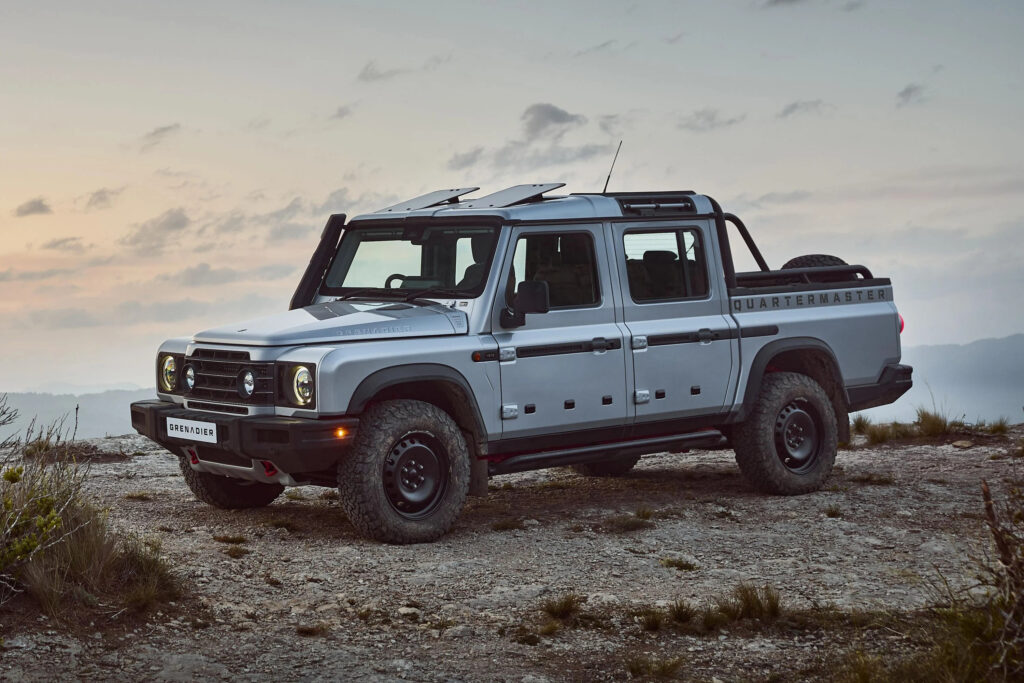
I was thrilled to see that at the recent ‘Goodwood Festival of Speed’, new kid on the block INEOS is doing what modern-time disruptors pride themselves on, and that’s rattling traditionalists’ cages. Funnily enough, on this occasion I’m grouping petrol and electric vehicle cars together here as the traditionalists, which I’m sure will raise the ire of some EV supporters.
In mid-July, alongside the launch of the new INEOS Grenadier Quartermaster 4×4 Pick Up, they also showcased a prototype Grenadier powered by a BMW hydrogen fuel-cell system, with electric motors and let the motoring world know that they believe Hydrogen is the ‘key fuel of the future’, and I personally agree. Contrary to what many western country governments are pushing on us with what can be argued are unrealistic EV goals, I don’t believe EV’s are the answer to our environmental issue. Yes, they are definitely a step in the right direction, but only a step.
Toyota has been manufacturing Hydrogen Cell vehicles for some years now, and in the process have been widely criticised by some for not supporting the EV sector as vigorously as they should, however I see the Grenadier Hydrogen Prototype as an endorsement that they also believe Hydrogen powered vehicles needs to be the main object and it should be seriously fast-tracked.
Here is a recent drive.com.au article that looks at the INEOS Grenadier Fuel Cell launch at the Goodwood Festival of Speed.
INEOS unveils hydrogen-powered Grenadier four-wheel drive prototype – drive.com.au
According to INEOS, Grenadier’s electric hydrogen fuel-cell 4×4, (the Grenadier Hydrogen Fuel Cell (FCEV) Technology Demonstrator) shows how well-suited the zero emissions’ technology is for a future long-range 4X4 off-roader. The zero-emission hydrogen Grenadier Demonstrator 4X4 uses the BMW Group’s latest hydrogen fuel cell powertrain, considered to be the most advanced and powerful in the automotive sector. It uses hydrogen gas to react with oxygen from the air in a chemical reaction that takes place at the surface of the fuel cell’s inner membrane, generating electric power to drive the vehicle’s electric motors. The only bi-product from the exhaust through this reverse electrolysis process is water vapour.
Developed in partnership with Austrian engineering consultancy AVL, the hydrogen Grenadier Demonstrator has undergone rigorous testing to ensure there has been no compromise to its on and off-road capabilities or towing capacities.
INEOS are also preparing to launch a new smaller all-electric vehicle sometime in 2026. But while such battery electric vehicles are perfect for certain uses, shorter trips, hydrogen fuel cell cars are more suited for larger vehicles for longer trips, heavy duty use where battery weight impacts too much on payload and where long range between stops is necessary. The hydrogen powered Grenadier Demonstrator can do everything a conventionally powered Grenadier can but with zero emissions.
One could also argue that it’s in INEO’s self-interest to advance the Hydrogen Fuel Cell as they currently produce and use 400,000 tonnes of low carbon hydrogen every year, the equivalent of replacing up to 2 billion litres of diesel. Put simply, they know how to make, transport, store and use it, and that must be good for those among us who would like to see the hydrogen fuel cell technology fast tracked as quickly as possible.
